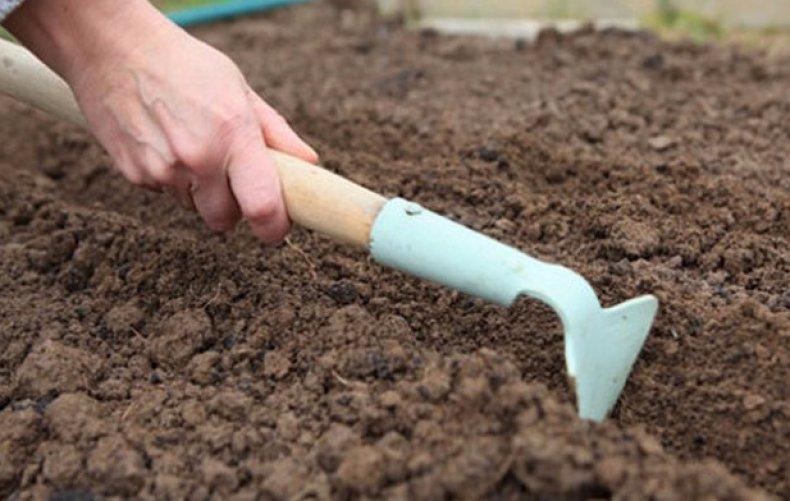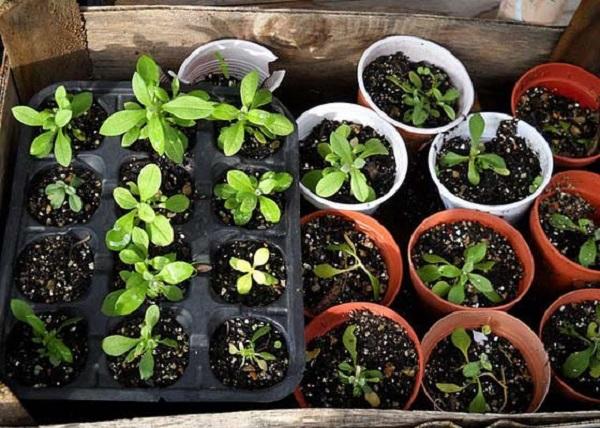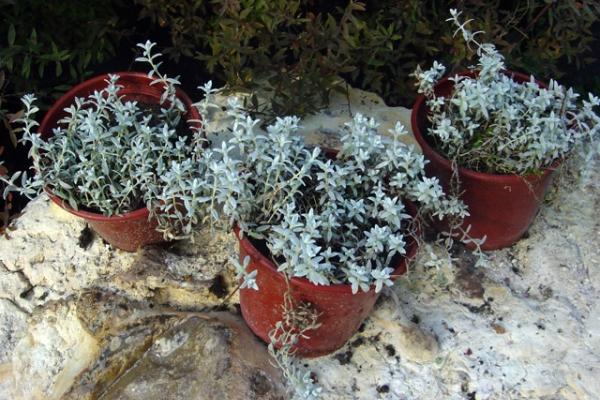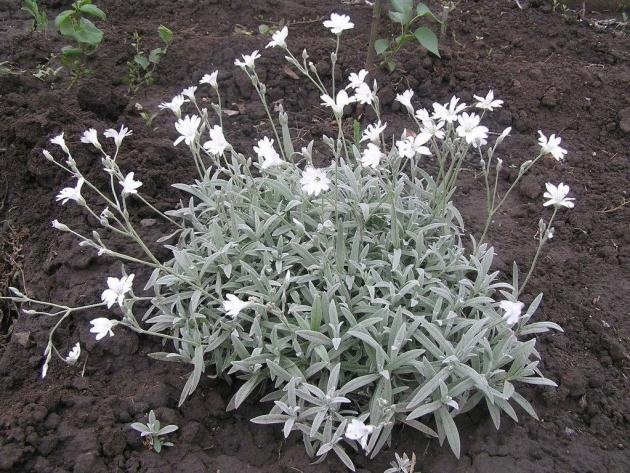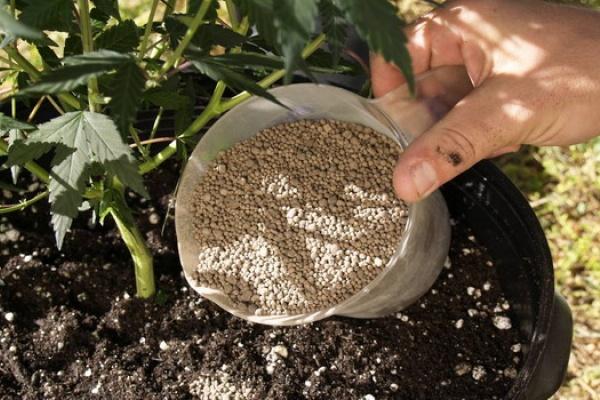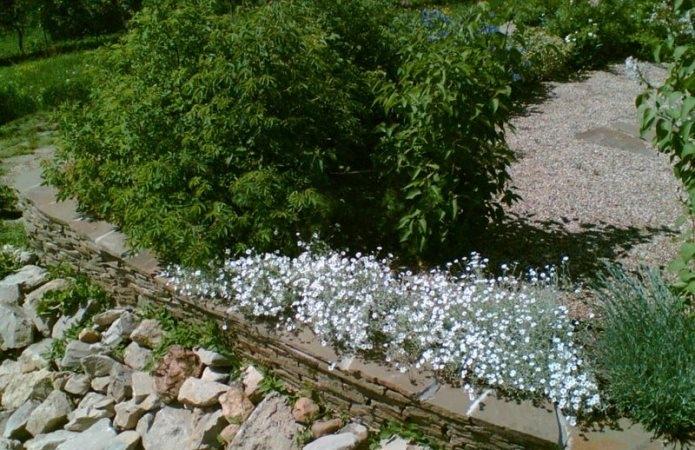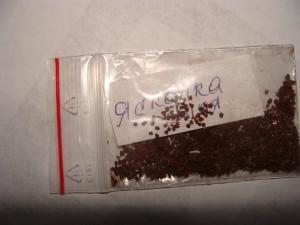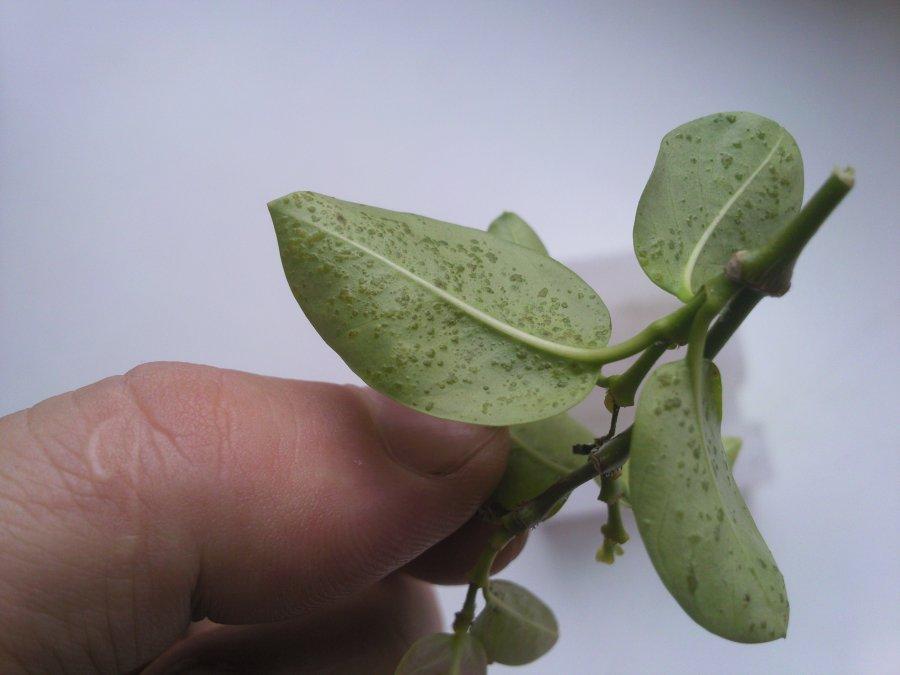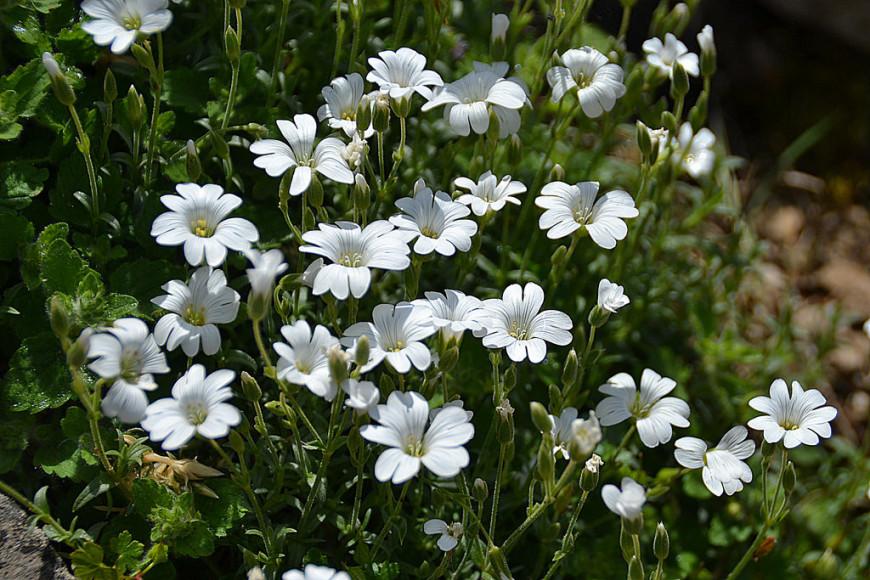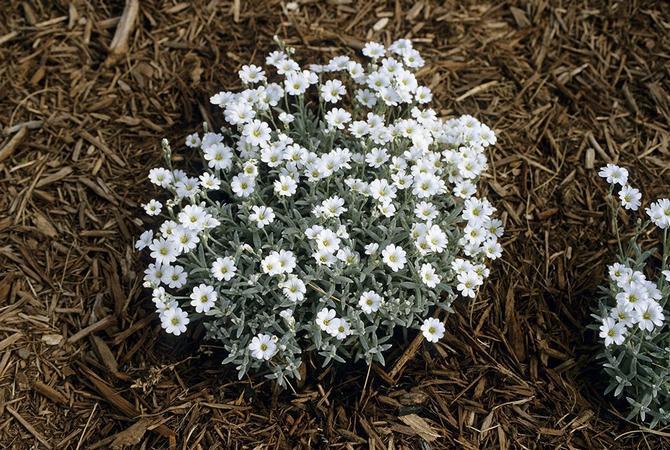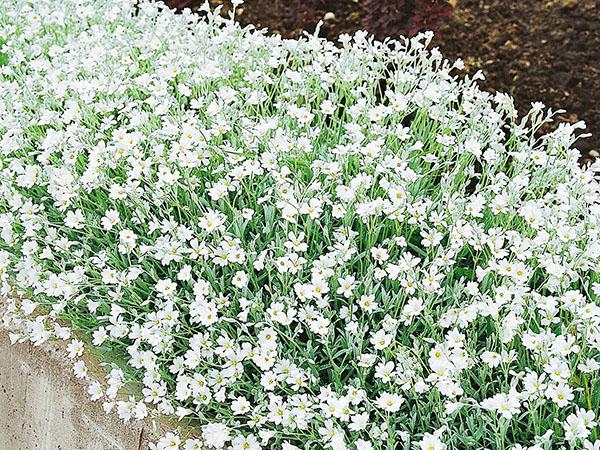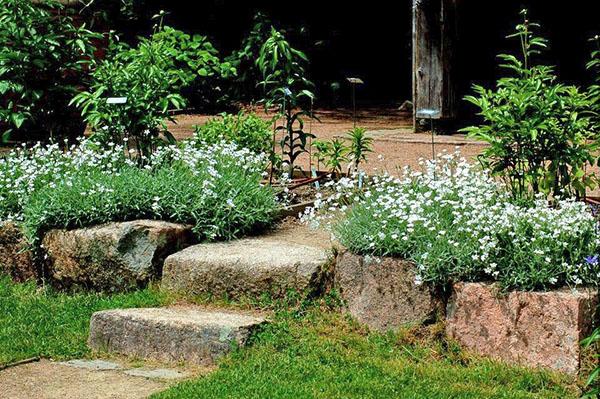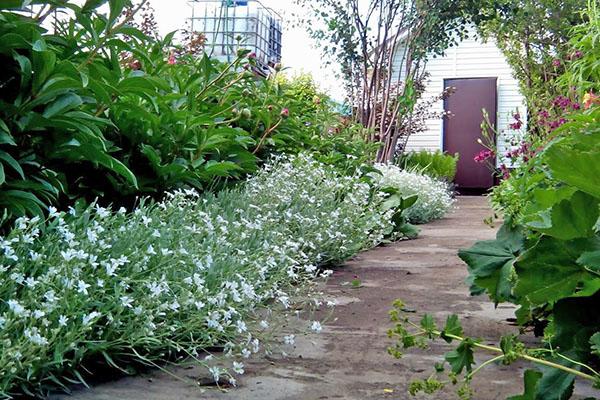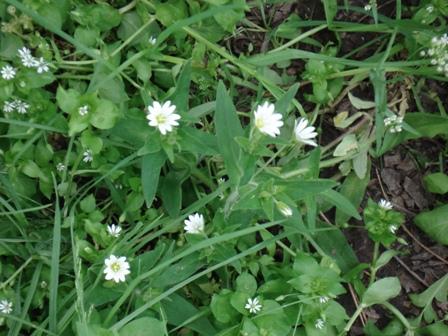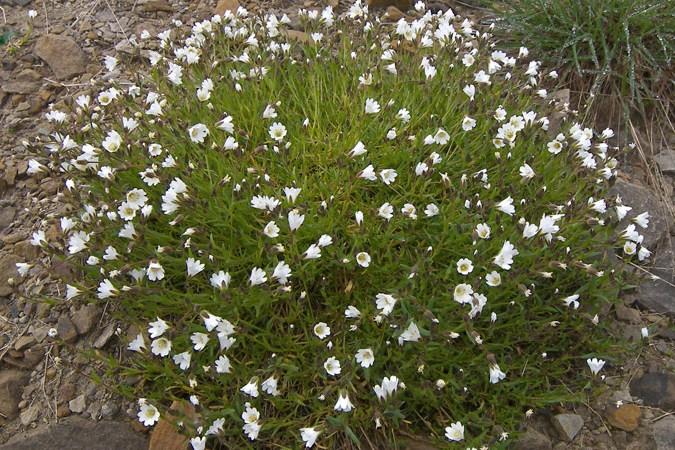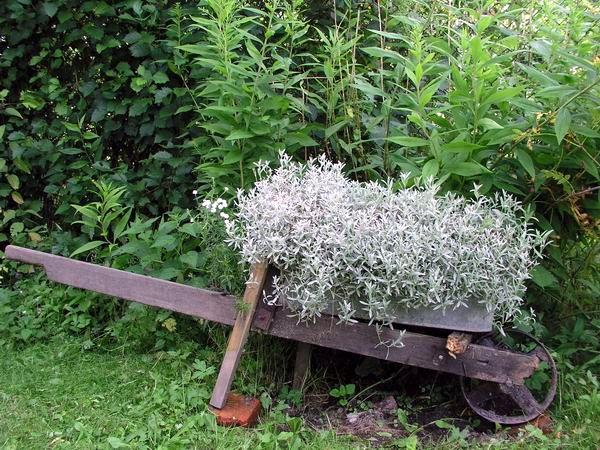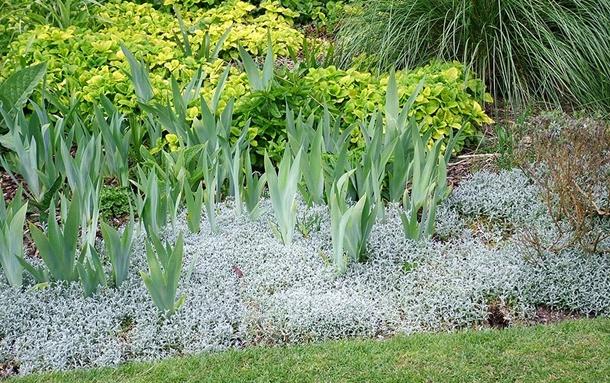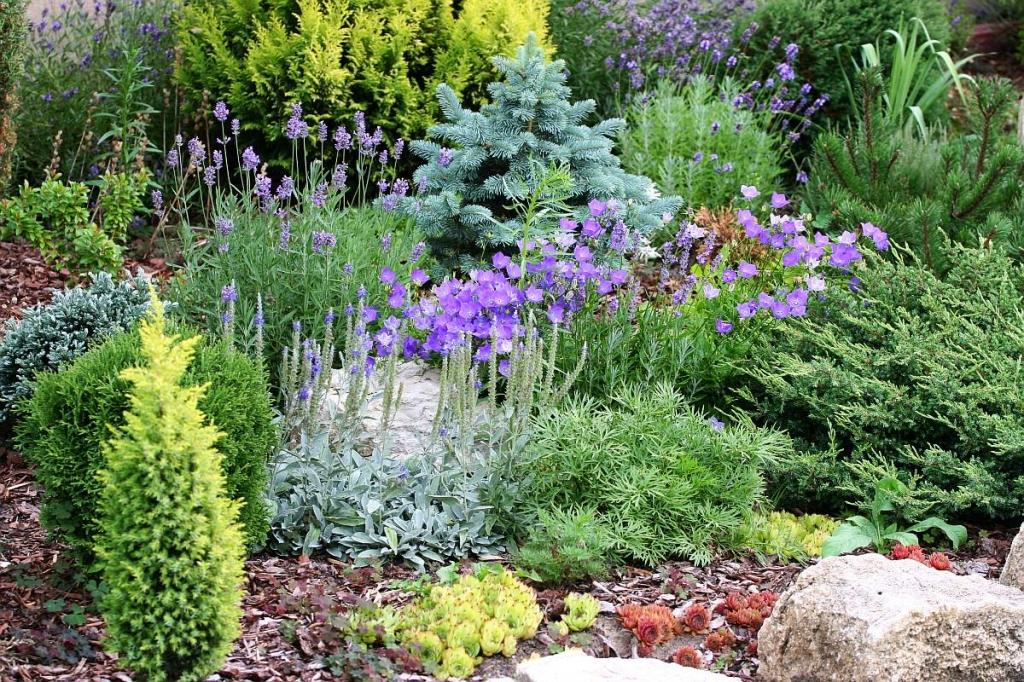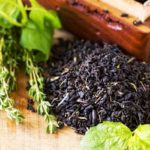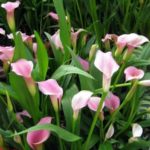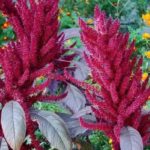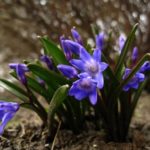Gardens and flower beds are not always filled with exquisite exotic flowers; simplicity, endurance and unpretentiousness are no less attractive. The seedling deserves special attention; even inexperienced gardeners can plant and care for this flower. The plant is great for alpine slides and rock beds; its thick leaves and fast-growing shoots help fill space and provide an attractive backdrop for other crops.
- Description and features
- Growing seedlings
- Deadlines
- How to plant
- Watering
- Loosening
- Picking
- Hardening
- Planting in open ground
- When to plant
- Selecting a location
- Soil requirements
- Planting scheme
- Choice of neighbors
- Care
- Watering
- Loosening and weeding
- Trimming
- Top dressing
- Transfer
- Preparing for winter
- Diseases and pests
- Rejuvenation
- Reproduction
- Seeds
- Dividing the bush
- Layering or dividing rhizomes
- Kinds
- Alpine
- Bieberstein
- Felt
- White
- Ural
- Field
- Large-flowered
- Purple
- Snow-white
- Ordinary
- Silver
- Soddy
- Popular varieties
- Columnae
- Crystal Falls
- Snow carpet
- Use in landscape design
- Alpine coaster
- Mixborders, mixed flower beds
- Flowerbed-stream
- Carpet plantings
- Curbs, discounts
- Support walls
- Terraced gardens
- Combinations with flowers
- Analogs
- Beneficial features
- Reviews
Description and features
Jaskolka belongs to the carnation flowers and has almost 200 varieties, some of which are annual, and some are perennial.
General characteristics of the varieties:
- The rhizome of the bush grows underground, releasing straight stems to the surface.
- Depending on the variety, the shoots are pubescent or bare.
- During the flowering period, it is covered with complex inflorescences of white flowers with yellow stamens.
- The fruits are presented in cylinder-shaped capsules with round small seeds.
Growing seedlings
Growing seedlings from seeds using the seedling method is most often used by gardeners. This allows you to grow viable plants in comfortable conditions and place them in a permanent place in the garden when the soil is warm and there is sufficient daylight.
Deadlines
At the beginning of March, containers and suitable soil are prepared for seedlings, which you can buy in a store or make yourself. Seeds are planted in March or early April, focusing on varietal requirements. Seedlings are planted in a permanent location in July.
How to plant
Drainage is placed in a container of suitable size, which is covered with ordinary soil mixture for seedlings.The seeds are scattered on the ground, sprinkled a little, covered with film and exposed to the sun. Comfortable temperature for the appearance of sprouts is within 21-23 °C.
Watering
Before the first shoots appear, the seeds are watered once every 2-3 days. The plant is tolerant of a lack of moisture, but young shoots should not be allowed to dry out.
Loosening
The roots of the shrub require constant access to oxygen; the soil must have good air permeability. To do this, the soil needs to be loosened periodically. As for removing weeds, grass has little effect on the growth of the bush.
Picking
Picking seedlings is not a necessary requirement for growing seedlings. The procedure is carried out if the seedlings appear very densely and there is not enough space for free plant growth. Upon reaching a height of 5 cm, the seedlings are divided, planted in separate containers or a common container at a distance of 70 mm from neighboring ones.
Hardening
A few weeks before planting in the ground, seedlings are prepared for changing conditions. Plants are taken outside in the daytime, gradually increasing the period. It is better to start with a half-hour stay and continue until a period of full daylight is reached.
Planting in open ground
Seedlings are planted in the ground as follows:
- The site is dug up 3 weeks before planting.
- Fertilizers are applied.
- Before planting, dig up again.
- Seedlings are planted in separate holes.
- Water the plants.
When to plant
Grown seedlings are planted in flower beds in early July. Seedlings can be planted directly in open ground. Depending on the variety, plants are planted in April or October.
Selecting a location
Basic requirements for the growing site:
- open sunny place, without shading;
- blowing winds are acceptable;
- the top of the hill fits well;
- low-lying areas are unsuitable.
When choosing a suitable place for planting, you should be guided by the characteristics of the variety in order to select conditions that are close to natural.
Soil requirements
Loose soil with high throughput for air and water is suitable for the planting. Based on its morphological composition, it is preferable to plant the plant in sand or sandy loam, or, in extreme cases, loam. Soil poor in microelements is fertilized with compost or humus in an amount of 6 kg per square meter. A third of sand is added to clay soil, and part of peat is added to rocky soil.
Planting scheme
The distance between individual plants is at least 30 cm. Perennial varieties grow in a circle 0.7 m from the center. A low-growing plant should not be planted near tall plants with active growth. In narrow flower beds, the flower is planted in one line at a distance of 20 cm. Single bushes are placed in crevices of stones, between brickwork.
Choice of neighbors
Large bulbous crops are planted next to low shrubs:
- tulips;
- daffodils;
- rhizomatous irises;
- lilies.
But the plant is not recommended to be grown together with muscari, crocuses and bulbous irises.
Care
Yaskolka is an unpretentious plant, easy to care for. With the right planting location, an important condition for its beautiful appearance and condition is timely moderate watering. Additionally, you can dig up and fertilize the soil, trim and replant bushes.
Watering
Despite its high resistance to lack of moisture, the plant needs regular watering. Especially if it grows on steep slopes or rocky surfaces. The amount of water depends on weather conditions and the season, since in spring and autumn the bushes can be watered less.
Loosening and weeding
The root system of the bushes must be provided with a good flow of air and moisture. The soil must be loosened periodically, based on the density and degree of compaction. The plant does not need frequent weeding, but in clean soil flowering occurs faster.
Trimming
The growth of the mole occurs at a fairly rapid pace. To regulate the appearance of the bushes, it is necessary to prune the plant. At the very beginning of spring, before the start of the growing season, old, dry and diseased shoots are removed. For single plants and groups, forming pruning is also carried out. At the end of flowering, cut off the flower stalks.
Top dressing
The seedling grows well even without additional fertilizing. When planting, the plant is fertilized with organic matter. And during the growing season, if necessary, complex mineral fertilizers are applied.
Transfer
As dry shoots are removed over the years, the geranium loses its decorative effect. To revive, the bushes must be replanted at least once every 4 years. When replanting, humus or compost is added to the soil, and abundant watering is also carried out.
Preparing for winter
The plant has a high degree of winter hardiness, but to prevent it from freezing, it is recommended to prepare a shelter. It is best to use a covering material that is not too warm, for example, lutrasil. Under natural shelters, such as spruce branches, the bush can rot. In regions with heavy snowfall and mild frosts, additional insulation is not required.
Diseases and pests
Good immunity allows the moth to avoid infection with dangerous diseases. When planted in a waterlogged, shaded area, the shoots may become infected with a fungal infection. And excessive watering and stagnation of water often leads to rotting of the roots.Pests do not find this crop attractive, so insecticide prevention is not necessary.
Rejuvenation
Most varieties of jasmine are grown in one place for 5 years or longer. In order to maintain a lush crown, it is necessary to rejuvenate the plants at least once every 4 years. The bushes are planted in fresh soil, dividing the rhizome into smaller parts.
Reproduction
The moth reproduces in various ways:
- seeds;
- dividing the bush;
- layering;
- dividing the rhizome.
Seeds
Propagation by seeds is natural for the plant, and if flower stalks and ripe fruits are not removed, the seedling will grow by self-seeding. Collecting seeds for subsequent planting is ineffective, since the plant may lose its varietal qualities. The seedling grown from seeds blooms in the 2nd year.
Dividing the bush
The bushes are divided into parts mainly in the spring. In autumn, the procedure is carried out only in warm southern regions. The bush is dug up along with a lump of earth and divided into 2-3 parts. Each division is planted in a new place and watered abundantly.
Layering or dividing rhizomes
The rhizomes are divided in early spring, when they have produced small young shoots. The root is cut into pieces, leaving 2-3 growth points on each. It is not necessary to dig up the entire bush. You can cut off a suitable shoot in June, before or immediately after flowering, and dig it in a new place, covering it with a transparent cap.
Kinds
Not all types of woodweed have decorative qualities; most are weeds and significantly interfere with the growth of other crops. Several varieties with a multi-year growth period are used in gardening.
Alpine
Traits of the Alpine hawkweed:
- small height up to 15 cm;
- large flowers, 20 mm each;
- leaves are small in size with a silvery tint;
- blooms in May;
- prone to freezing in mid-latitudes and to the north.
Bieberstein
The most common type of scythe has its own characteristics:
- the plant reaches a height of 20 cm;
- narrow leaves are covered with fluff;
- large flowers up to 30 mm in diameter;
- flowering from late April to late May.
Felt
The main differences of this type:
- heavily hairy leaves with silvery leaves;
- plant height 30 cm;
- grows quickly in the horizontal direction;
- flowers are small, no more than 10 mm;
- The flowering period is from May to June.
White
Features of the white jar:
- bush height 20 cm;
- prefers sandy soils;
- has strong winter hardiness.
Ural
The rare species is listed in the Red Book and has differences:
- shoot height 8-25 cm;
- leaves are large, 8 cm long;
- petals are dissected;
- loose turf.
Field
The field moth is different:
- height 40 cm;
- long flowering within 16 weeks;
- strong natural endurance.
Large-flowered
Differences of this type:
- flowers 30 mm in diameter;
- bush height 20 cm;
- flowering in July and August.
Purple
Features of the purple jasper:
- flowering occurs in June;
- small leaves remain green even in winter;
- plant height 25 cm.
Snow-white
Special features of this species:
- high decorativeness of bushes without flowers;
- silvery tint of leaves;
- flowering from May to July.
Ordinary
Features of an ordinary jar:
- bush growth within 30 cm;
- grows in the wild;
- stems and leaves are pubescent.
Silver
This type is characterized by:
- rich silvery color of shoots and leaves;
- flowering in early June;
- miniature flower sizes.
Soddy
Special features of the turf grass:
- height within 8-30 cm;
- leaves 3 cm long;
- flowering from April to October.
Popular varieties
Not many varieties of woodleaf are used in garden plots. Preference is given to those that are best suited for a specific planting location.
Columnae
Features of the variety:
- height 10-15 cm;
- small oval leaves;
- flowering from May to June;
- high frost resistance.
Crystal Falls
Varietal characteristics:
- bush height 20 cm;
- flowering from May to July;
- flowers are located on short stems;
- the leaves are preserved in winter.
Snow carpet
Special qualities of this variety:
- shoot height up to 20 cm;
- small sessile leaves;
- flowering 25-30 days in May-June;
- resistance to frost and drought.
Use in landscape design
The highly decorative nature of the plant is widely used in the design of garden plots and complex landscapes. The plant is used both to accent brighter colors and as turf coverings.
Alpine coaster
When forming a colorful alpine slide, the best location for the pit is at the bottom of the slope. The plant looks good at the foot and as a natural border.
Mixborders, mixed flower beds
In flower beds with different crops, the plant is given a central place, surrounded by calendula or tulips. September flowers serve as the border of such a flower bed. In mixborders, the plant is planted in the foreground.
Flowerbed-stream
Flexible shoots and active growth allow the seedling to maintain the shape of stream beds, quickly filling the free space. The plant beautifully flows around trees, benches and road slabs.
Carpet plantings
Chillweed is an attractive ground cover crop that perfectly covers unattractive areas of the lawn.The plants grow quickly and cover the area with a silvery-white carpet.
Curbs, discounts
The javelin looks good in narrow borders and narrow borders. Low growth and short shoots serve as dense padding.
Support walls
The silvery color of the plants harmonizes well with stones and brickwork. Iskolka combines well with Echium and Sisyurynchium on supporting walls.
Terraced gardens
When building terraces, cherry bushes emphasize the structure of the levels. Plants create the effect of a snow-white cloud and preserve the relief of the structure.
Combinations with flowers
Jaskolka looks attractive with other colors. A neighborhood with daisies, daffodils, bluebells and sedums is best suited.
Analogs
Among the plants that can be used to replace the plant, the following deserve attention:
- false sedum;
- Delosperma Cooper;
- arabis;
- Arends' saxifrage.
It is unlikely that at least one ornamental crop will be able to qualitatively replace the lush flowering chickweed in dry areas with direct sunlight.
Beneficial features
In folk medicine, parsley is used for its sedative and anti-inflammatory properties. The flowers of the plant serve as the basis for decoctions against vitamin deficiency, conjunctivitis, swelling, dermatitis and digestive disorders. Caution should be used in case of allergies and peptic ulcers.
Reviews
Olga: “The grass is growing on my site without any drainage on a steep slope. The bushes overwintered there very well, but in a more level place they got wet.”
Tatyana: “After the first winter, our mole did not look particularly good, but it grew back and bloomed very luxuriantly. We definitely need to limit the bushes, since we have overgrown not only on the hill, but also on the path.”


